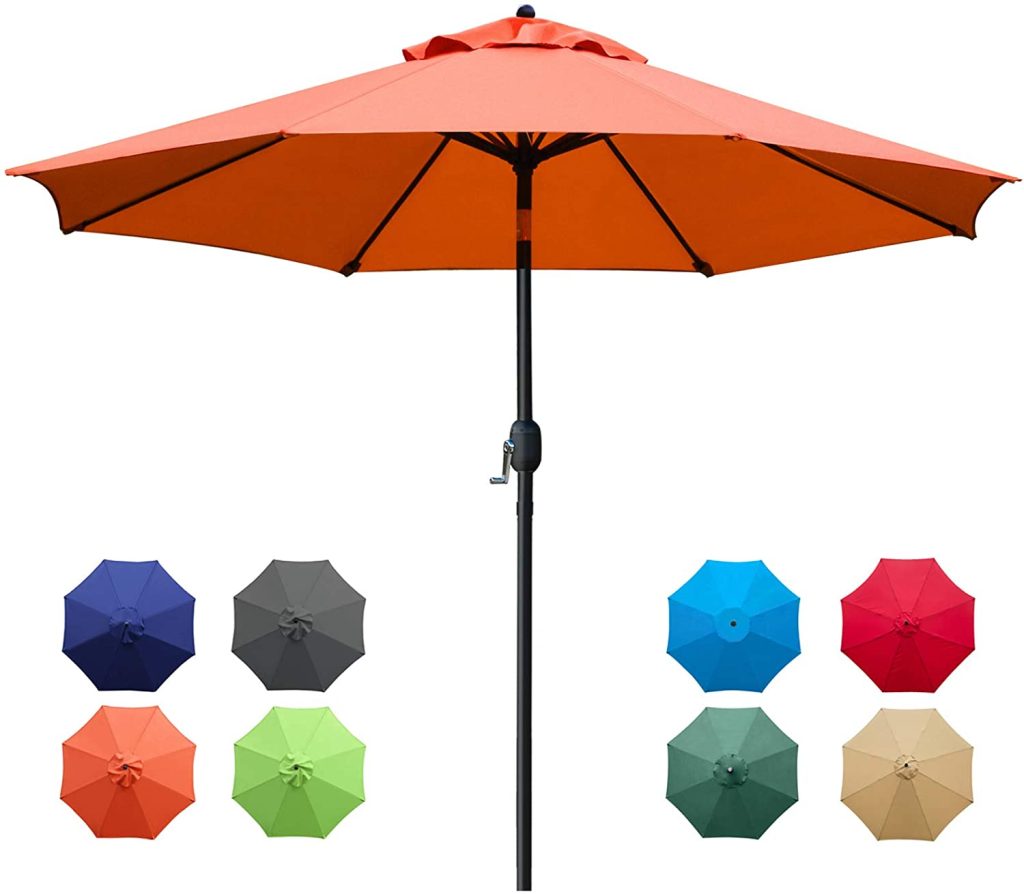Patio umbrellas come in various styles, and one of the key components that determine their structure and durability is the frame. The frame of a patio umbrella supports the canopy and provides stability. Here are some common types of patio umbrella frames:
- Wooden Frame:
- Material: Made of wood, typically hardwoods like teak or eucalyptus.
- Advantages: Wooden frames provide a classic and natural look that complements outdoor settings. They are sturdy and durable, with good resistance to wind.
- Considerations: Wooden frames may require maintenance like sealing or staining to protect against weathering. They are generally heavier than other frame types.
- Aluminum Frame:
- Material: Made of lightweight, rust-resistant aluminum.
- Advantages: Aluminum frames are lightweight, making them easy to move. They are durable, resistant to corrosion, and require minimal maintenance.
- Considerations: They may not be as visually appealing as wood to some people, but they can be powder-coated for various finishes.
- Steel Frame:
- Material: Made of steel, which can be coated for rust resistance.
- Advantages: Steel frames are robust and stable, capable of withstanding windy conditions. They provide a more substantial feel compared to aluminum.
- Considerations: Steel frames can be heavy and susceptible to rust if not properly coated or maintained.
- Fiberglass Frame:
- Material: Made of lightweight, flexible fiberglass rods.
- Advantages: Fiberglass frames are exceptionally durable, flexible, and wind-resistant. They are also corrosion-resistant.
- Considerations: They tend to be more expensive than aluminum or steel frames.
- Cantilever or Offset Frame:
- Design: Cantilever umbrellas have an offset or side-post design, allowing for versatile shading without a central pole. They often have a crossbeam structure.
- Advantages: Cantilever umbrellas provide unobstructed shading, ideal for positioning over outdoor furniture. They come in various frame materials.
- Considerations: They can be more complex to operate and may require a heavy base for stability.
- Collapsible or Telescopic Frame:
- Design: Some patio umbrellas have collapsible or telescopic frames that allow you to adjust the height and angle of the canopy.
- Advantages: These umbrellas offer flexibility in shading, allowing you to adapt to changing sun angles.
- Considerations: They may be less stable in strong winds compared to fixed-height umbrellas.
- Hybrid Frame:
- Design: Hybrid frames combine materials such as wood and aluminum or steel and fiberglass to leverage the strengths of each material.
- Advantages: Hybrid frames aim to provide the best of both worlds: the aesthetics of one material and the durability of another.
- Considerations: The specific advantages and considerations depend on the materials used in the hybrid design.
- Wind-Resistant Frame:
- Design: These frames are engineered to withstand windy conditions and often include features like reinforced ribs, vented canopies, and flexible components.
- Advantages: Wind-resistant frames provide added stability and durability in breezy or gusty environments.
- Considerations: They may be heavier or more complex than standard frames.
When choosing a patio umbrella frame, consider your climate, maintenance preferences, aesthetics, and budget. Each frame type has its advantages and considerations, so selecting the right one depends on your specific needs and outdoor conditions.

